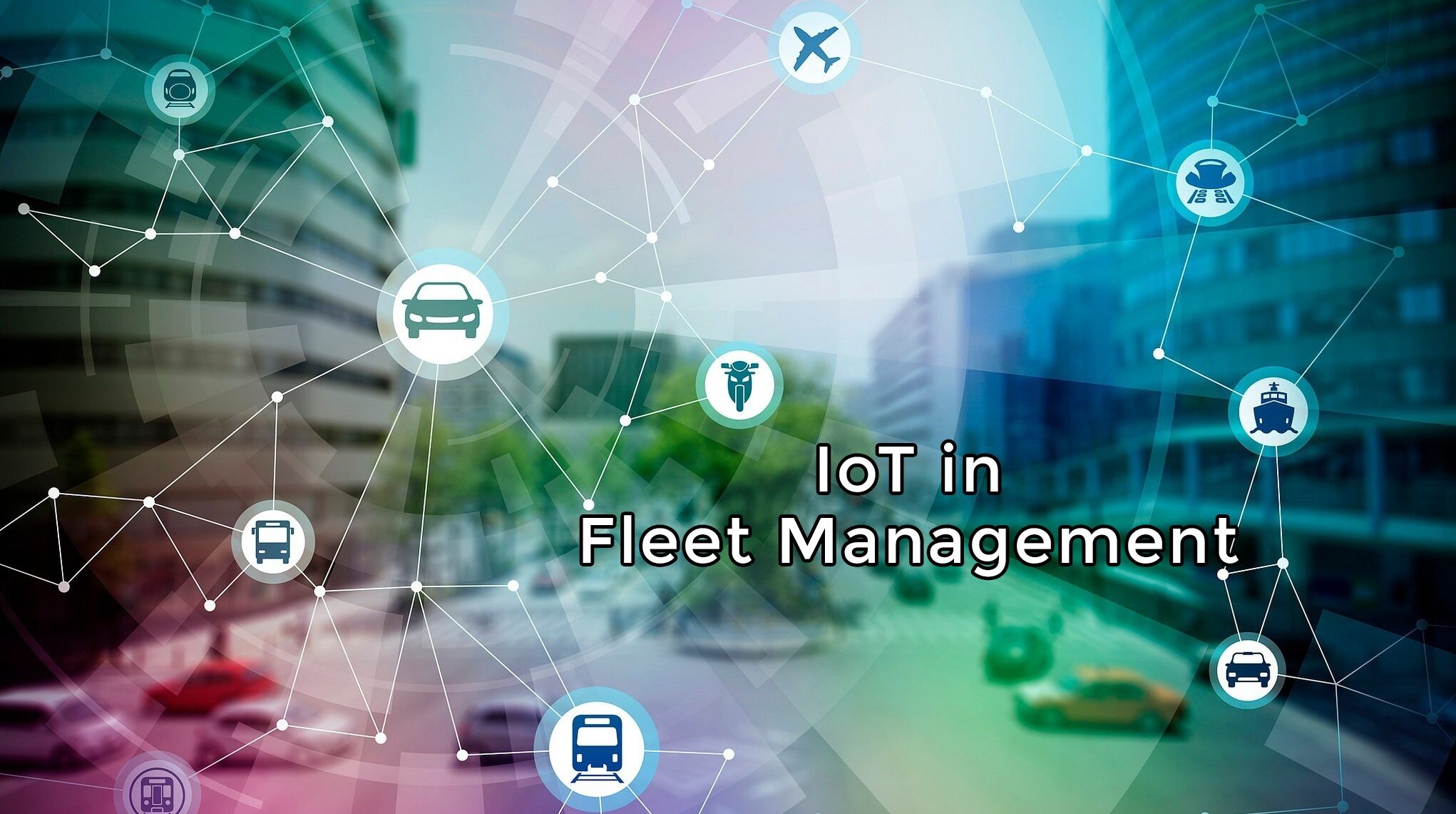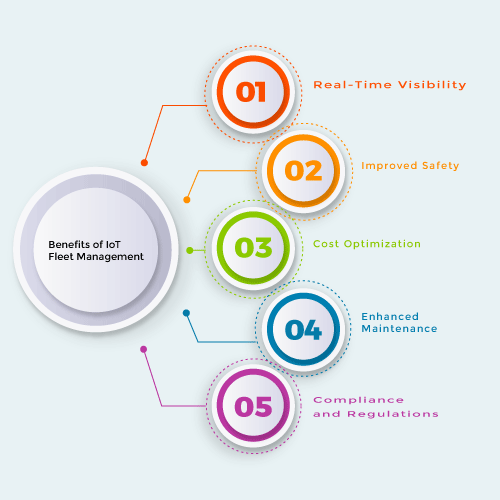
26 Jun IoT for Fleet Management Services Success
Introduction
Fleet management is becoming crucial in industries by allowing them to efficiently monitor and control their vehicle fleets. With IoT (Internet of Things) technology, fleet management has reached new heights of efficiency and control. In this blog post, we will explore how IoT is revolutionizing fleet management practices and discuss the benefits, implementation tips, and potential challenges associated with IoT fleet management.
The Power of IoT in Fleet Management
IoT technology brings a multitude of benefits to fleet management, empowering organizations with real-time data, advanced analytics, and enhanced operational capabilities. Here are some key features and capabilities of IoT that make it ideal for fleet management:
Real-Time Tracking and Monitoring
- GPS-enabled IoT devices provide precise real-time location tracking of vehicles, allowing fleet managers to have up-to-date visibility.
- Monitoring vehicle status, speed, and fuel consumption in real-time enables better decision-making and improved operational efficiency.
Remote Diagnostics and Predictive Maintenance
- IoT sensors collect and transmit real-time vehicle data, facilitating remote diagnostics and early detection of potential issues.
- Predictive maintenance alerts based on IoT data allow proactive scheduling of maintenance tasks, reducing unexpected breakdowns and minimizing vehicle downtime.
Data Analytics for Actionable Insights
- IoT-powered analytics provide fleet managers with actionable insights derived from vast amounts of data.
- Advanced analytics help optimize routes, reduce idle time, monitor fuel consumption patterns, and predict maintenance needs.
Tips for Successful IoT Fleet Management Implementation
Implementing IoT fleet management requires careful planning and execution. Here are some tips for you for a successful implementation:
Define Clear Objectives
Clearly define your goals and objectives for fleet management, which may include:
- Improving operational efficiency
- Reducing costs and maximizing profitability
- Enhancing driver safety and Compliance
- Optimizing maintenance schedules and minimizing downtime
Select the Right IoT Solution
Choose an IoT platform that aligns with your specific fleet management needs. Look for features such as:
- Real-time tracking and monitoring capabilities
- Remote diagnostics and predictive maintenance features
- Robust data analytics capabilities for actionable insights
- Scalability of systems & integration options with existing systems
Ensure Data Security
Implement robust security measures to safeguard sensitive data transmitted by IoT devices. Consider the following steps:
- Encryption protocols to protect data during transmission and storage
- Safe communication channels to stop unauthorized access
- Regular security audits and updates to address potential vulnerabilities
Train and Engage Employees
Ensure your fleet personnel is adequately trained to effectively use IoT devices and platforms. Promote employee engagement by:
- Providing comprehensive training sessions on IoT technology and its benefits
- Encouraging feedback and suggestions from employees to improve implementation
- Emphasizing the positive impact of IoT on their work efficiency and safety
Start Small and Scale
Begin with a pilot project to test the effectiveness of IoT solutions in your fleet. Follow these steps to scale up successfully:
- Select a small subset of vehicles or operations for initial implementation
- Monitor the pilot project closely and gather feedback from users
- Gradually expand the deployment to other vehicles and operations based on the pilot project’s success.
Benefits of IoT Fleet Management
Implementing fleet management brings several significant benefits to organizations. Let’s discuss the key advantages:
Real-Time Visibility
- Instant access to accurate, real-time data about vehicle location, status, fuel consumption, and driver behavior
- Better decision-making through up-to-date information and improved operational efficiency
Improved Safety
- IoT sensors and devices monitor driver behavior and detect harsh driving events in real-time
- Real-time alerts and feedback to drivers, promoting safer driving practices and reducing the risk of accidents
Cost Optimization
- IoT-powered analytics optimize routes, reduce idle time, and monitor fuel consumption patterns
- Predictive maintenance alerts and proactive scheduling minimize unexpected breakdowns and vehicle downtime, resulting in significant cost savings
Enhanced Maintenance
- Predictive maintenance alerts based on IoT data allow proactive scheduling of maintenance tasks
- Reduced downtime through proactive maintenance, ensuring vehicles are in optimal condition for operations
Compliance and Regulations
- IoT systems assist in automating compliance with industry regulations, such as electronic logging devices (ELD) for accurate and reliable hours-of-service reporting
- Simplified compliance processes and reduced administrative burden for fleet managers

Difficulties in Implementing IoT Fleet Management
While IoT fleet management brings significant advantages, implementing it may present some challenges. Here are a few potential difficulties:
Initial Investment
- Implementing an IoT fleet management system requires an upfront investment in hardware, software, and infrastructure
- Organizations need to consider the cost implications and weigh them against the expected benefits
Integration Challenges
- Integrating IoT devices and platforms with existing fleet management systems and legacy infrastructure may pose technical challenges
- Careful planning and coordination are necessary to ensure a seamless integration process
Data Management and Analysis
- Handling large volumes of data generated by IoT devices can be complex
- Organizations must invest in robust data management and analytics capabilities to derive actionable insights from the data
Security Risks
- IoT devices & networks are possible targets for cyberattacks
- Implementing robust security measures, such as encryption and secure communication channels, is crucial to protect data and devices
Employee Resistance
- Some employees may be resistant to change or fear that IoT implementation could lead to job insecurity
- Effective change management strategies, employee engagement, and clear communication can help address these concerns
Conclusion
IoT fleet management holds immense potential for driving efficiency, control, and cost savings while enhancing safety and compliance in fleet operations. By leveraging real-time data, predictive analytics, and remote monitoring capabilities, organizations can unlock new levels of operational excellence and gain a competitive edge in today’s digital era. Embrace the power of IoT and take your fleet management practices to new heights.